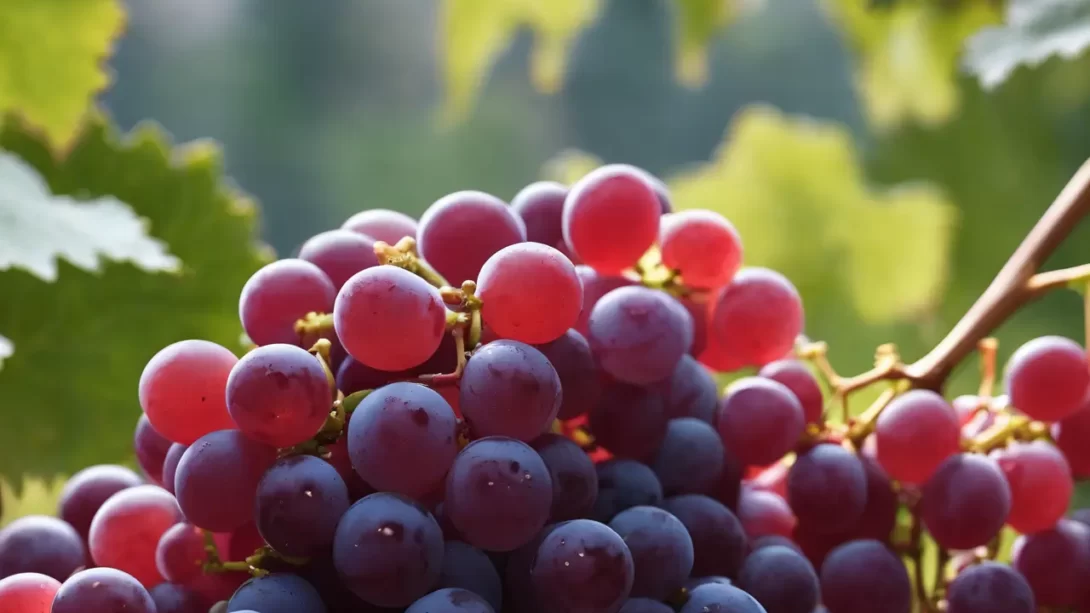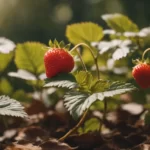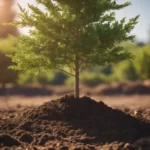Grapes, one of the most versatile and widely cultivated fruits in the world, require careful attention to ripen properly. The ripening process is crucial in determining the flavor, sugar content, and overall quality of the grapes, which in turn affects their suitability for eating fresh or for wine production. Different grape varieties, each with unique characteristics, demand specific ripening conditions. Understanding these needs and the factors influencing ripening is key for both amateur gardeners and professional vineyard managers.
Grape Ripening Process
Ripening in grapes involves a series of physiological changes. These changes include an increase in sugar content, a decrease in acidity, the development of varietal flavors, and changes in color – green grapes turning to red or purple, for example. This process is influenced by several factors, including climate, grape variety, and the health of the vine. Grapes typically ripen best in warm, sunny conditions, but each variety has its optimal climate range. The vine’s health, affected by its care and the local environment, also plays a significant role in the quality of the ripening fruit.
Pre-Harvest Considerations
The location of the vineyard and its microclimate are pivotal in grape ripening. Grapes require a site that receives ample sunlight and has good air circulation to promote even ripening and prevent diseases. Soil health is another critical factor – soils that drain well yet retain sufficient moisture are ideal. Nutrient balance in the soil affects vine health and, consequently, grape ripening.
Vine training and pruning are essential techniques to manage grape ripening. Proper pruning ensures that the vine’s energy is focused on producing a limited number of grape clusters, resulting in better-quality fruit. Vine training systems, whether traditional or modern, are designed to optimize sun exposure and air circulation around the grape clusters, which is essential for uniform ripening.
Managing Vine Health for Better Ripening
Healthy vines are a prerequisite for well-ripened grapes. Integrated pest management strategies are employed to control pests and diseases that can affect grape quality. These strategies might include the use of resistant grape varieties, biological control agents, and, if necessary, chemical pesticides.
Water and nutrient management are equally important. Over-watering can lead to diluted flavors and increased disease pressure, while under-watering can stress the vine and hinder grape development. The nutrient needs of the vine vary over the growing season, and a balanced approach to fertilization is crucial.
Leaf removal and canopy management are practiced in many vineyards to enhance grape ripening. Strategic removal of leaves around the grape clusters can improve sun exposure and air circulation, which helps in even ripening and reduces the risk of rot and other diseases. However, this must be done judiciously to avoid sunburn on the grapes and to maintain enough leaf area for photosynthesis and vine health.
Harvest Timing and Techniques
Determining the right time to harvest grapes is a critical decision that greatly impacts their quality. The harvest timing depends on the sugar, acid, and tannin levels in the grapes, which vary with climate, grape variety, and desired wine style for vintners. Many growers rely on both scientific measurements, like Brix (sugar content), pH, and acidity levels, and sensory evaluation, including taste and texture, to decide when to pick the grapes. Harvesting techniques also play a vital role in maintaining grape quality. Hand-picking is often preferred for delicate varieties or high-quality winemaking, as it is gentler and allows for selective picking. Machine harvesting, more efficient and cost-effective, is used in larger vineyards and for less sensitive grape varieties.
Post-Harvest Ripening Techniques
While grapes generally achieve their optimum ripeness on the vine, certain post-harvest techniques can be used to fine-tune their ripeness. This is particularly relevant for grapes intended for raisin production or when unexpected weather conditions prevent optimal on-vine ripening. Controlled storage conditions, including temperature and humidity, are crucial for post-harvest ripening. Grapes can be exposed to ethylene gas, which is a natural plant hormone that can stimulate ripening. However, this technique is more commonly used with fruits like bananas and tomatoes and is less traditional in grape cultivation.
Common Challenges in Grape Ripening
Grape growers often face challenges related to uneven ripening within a single cluster or across a vineyard. This can be due to variations in vine vigor, nutrient distribution, or microclimatic conditions. Overripe grapes can lose their acidity and become too sweet, while underripe grapes may lack flavor and have excessive acidity. Climate plays a significant role in grape ripening, with issues like heatwaves, drought, or excessive rainfall posing challenges. Each of these factors can lead to uneven ripening and impact the quality of the harvested grapes.
Troubleshooting Ripening Issues
Addressing ripening issues often involves adjusting vineyard practices. For uneven ripening, vineyard managers might employ selective harvesting, picking only the ripe grapes and allowing the others more time to mature. Adjusting irrigation practices and canopy management can also help address uneven ripening by ensuring more consistent growth conditions throughout the vineyard. In cases of overripe or underripe grapes, blending different batches during winemaking can balance the flavors and acidity. Vineyard managers continuously adapt their strategies based on the specific conditions of each growing season and the unique characteristics of their grape varieties.
Managing Environmental Factors
Environmental factors play a significant role in grape ripening. Vineyard managers often have to adapt to changing weather patterns and climate conditions. In regions prone to cooler temperatures or unexpected frosts, techniques like using wind machines or heaters can protect the grapes and aid in ripening. In hotter climates, shading nets or strategic leafing can protect grapes from sunburn and excessive heat, which can halt the ripening process or lead to overripe flavors.
Technological Advancements in Monitoring Ripeness
Advancements in technology have provided grape growers with new tools to monitor grape ripeness more accurately. Drones, satellite imagery, and various sensors can be used to gather data on vine health, soil moisture levels, and microclimate conditions. This information helps in making informed decisions about irrigation, fertilization, and the optimal time for harvest.
The Art of Patience and Observation
Ripening grapes is as much an art as it is a science. It requires patience, careful observation, and a deep understanding of the grape variety and its interaction with the environment. Experienced growers learn to read the subtle signs in their vineyards, from the color and texture of the grape skins to the taste and feel of the berries. This intuition, combined with scientific knowledge, guides them in nurturing their vines through the ripening process.
Conclusion
Successfully ripening grapes is a complex and rewarding process that lies at the heart of grape cultivation. Whether for table grapes or winemaking, understanding and managing the many factors that influence grape ripening are key to producing high-quality fruit. By balancing traditional practices with modern techniques and maintaining a deep connection to their land and vines, growers can navigate the challenges of grape ripening to achieve the best possible outcome each season. As with many aspects of agriculture, the dedication and skill of the grower are reflected in the quality of the final product, making each grape a testament to the grower’s art and expertise.



